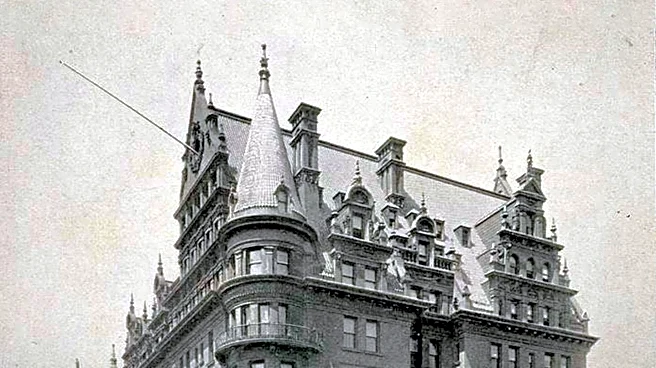What's Happening?
A hotel in Litchfield, Connecticut, is gaining attention for its unique blend of Victorian architecture and mid-century modern design. The hotel, which features a multi-room suite with luxurious amenities such as a four-poster king bed and heated floors, offers a New England fantasy experience. The interiors are lively, with a cozy library and an emerald green bar. The hotel also boasts a restaurant open to the public, led by Chef Tyler Heckman, known for his work in notable New York establishments. The menu features seasonal dishes with thoughtful flavor pairings, such as grilled short rib with Rainier cherries and chocolate mousse with tamarind. The hotel is located near historical landmarks like the Old Litchfield Jail and Litchfield Law School, providing guests with cultural exploration opportunities.
Why It's Important?
The hotel's unique architectural and design approach, combined with its culinary offerings, positions it as a distinctive destination for travelers seeking a blend of history and modern luxury. This development is significant for the local tourism industry, potentially attracting visitors from nearby urban centers like New York City. The hotel's proximity to historical sites and natural landscapes enhances its appeal, offering a comprehensive experience that combines relaxation, culture, and nature. This could lead to increased economic activity in the area, benefiting local businesses and contributing to the region's hospitality sector.
What's Next?
As the hotel continues to attract attention, it may see an increase in bookings, particularly from those seeking a unique getaway experience. The hotel's success could inspire similar ventures in the region, promoting further investment in the local tourism and hospitality industries. Additionally, the hotel's emphasis on preserving historical elements while offering modern amenities may encourage other establishments to adopt similar strategies, enhancing the overall appeal of Connecticut as a travel destination.
Beyond the Headlines
The hotel's approach to blending historical architecture with modern design reflects broader trends in the hospitality industry, where there is a growing demand for unique and authentic experiences. This trend highlights the importance of cultural preservation in tourism, as travelers increasingly seek destinations that offer a sense of place and history. The hotel's success could influence future developments in the industry, encouraging a balance between innovation and tradition.












